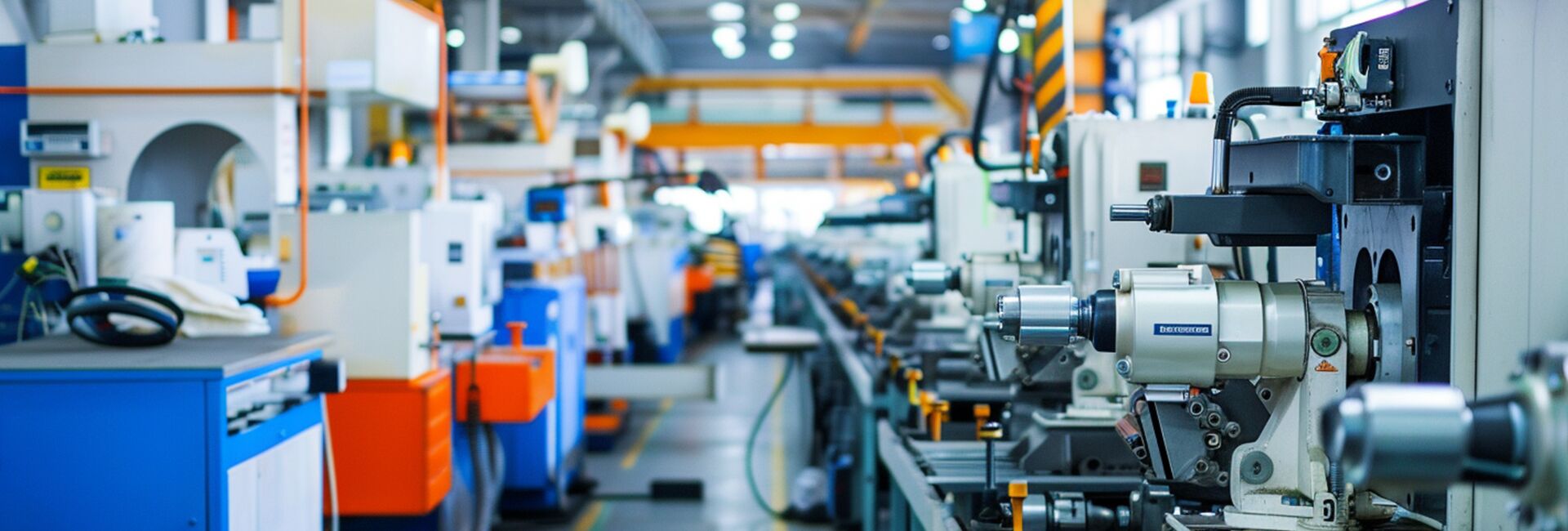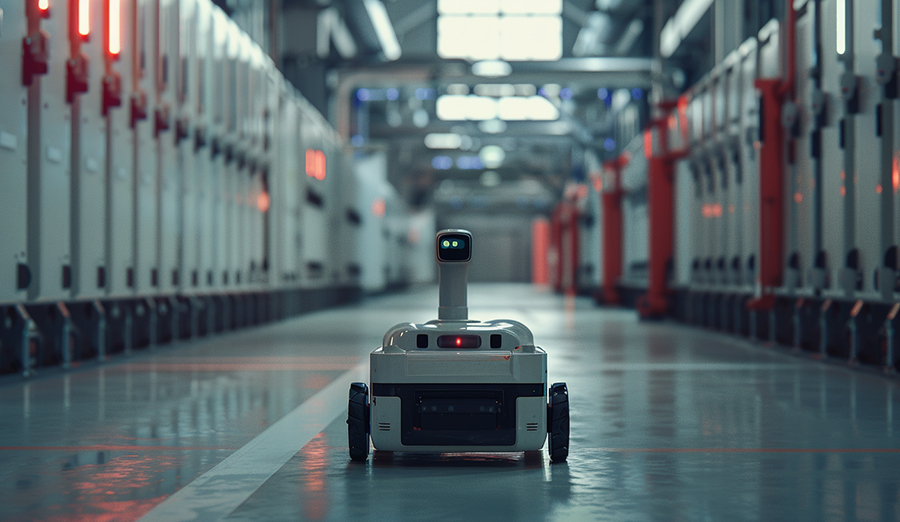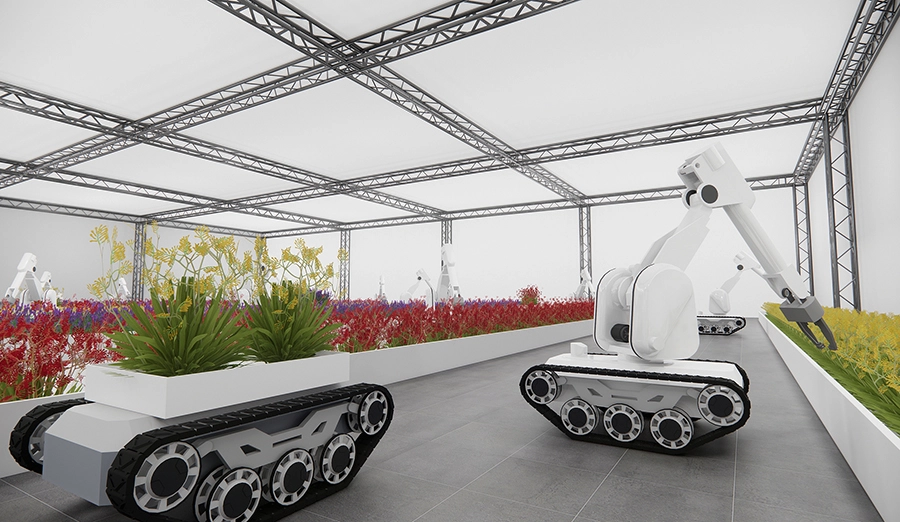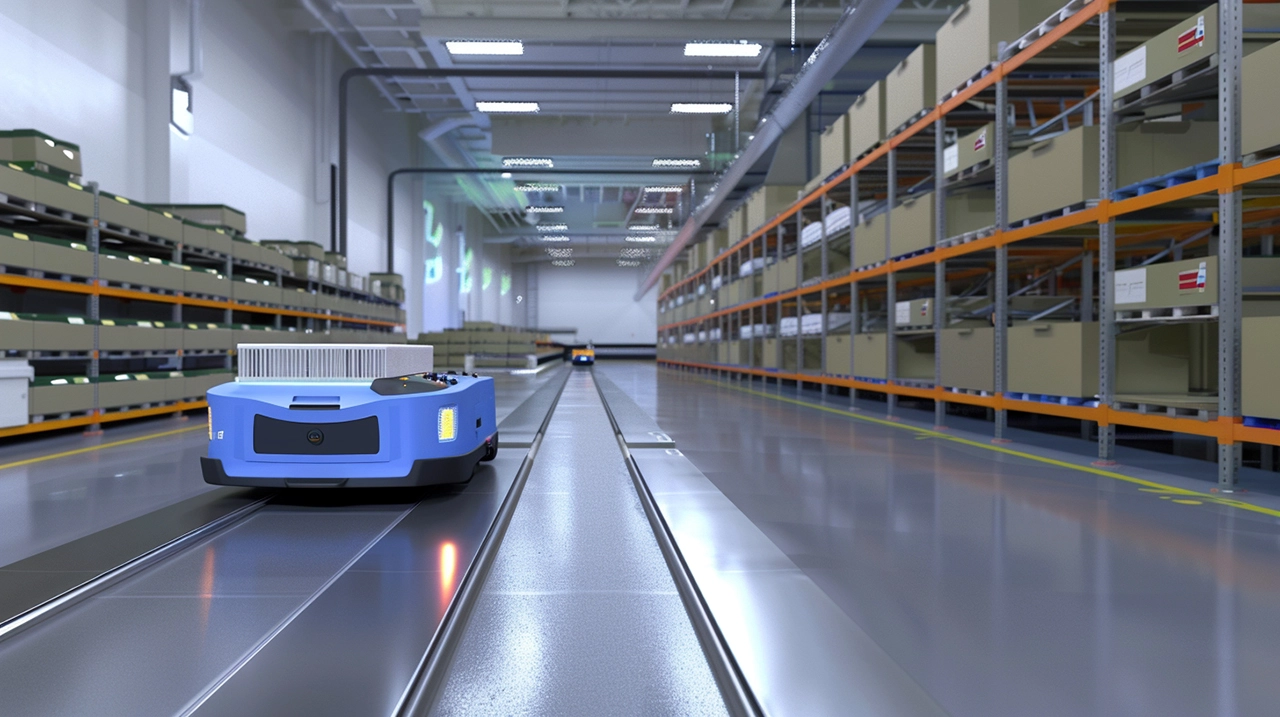
WIRELESS CHARGING IN THE NEWS
A power cord has restricted the pace of agricultural intelligence, but wireless charging is cutting off this last chain.
The contradiction between global population growth and the tightness of arable land resources is becoming increasingly acute. Agricultural robots have become the core force in the transformation of modern agriculture. In 2023, the global market size of agricultural robots exceeded 12 billion US dollars, with a compound annual growth rate of over 25%.
These intelligent devices, through automated and precise operation, reshape the agricultural production model in links such as sowing, picking, weeding and monitoring. However, behind the efficient operation, power and battery life have always been the bottlenecks restricting the release of its potential - and wireless charging technology is becoming the key to breaking the deadlock.
01 Agricultural Robot Landscape, the core productivity of smart farms
Agricultural robots have permeated the entire agricultural industrial chain and can be classified into four core types based on their functions. Sowing robots integrate GPS navigation and soil sensing technology to achieve centimeter-level seed positioning. For instance, the products of FarmWise can reduce seed waste by 15%.
Picking robots play a significant role in complex environments. The grape-picking unit of MetoMotion in the UK is equipped with 3D vision and flexible mechanical arms, achieving an efficiency three times that of manual labor and completely solving the problem of seasonal labor shortage.
Weeding robots have sparked a "green revolution" : The solar-powered model of Swiss Ecorobotix combines AI and laser technology, achieving a weeding accuracy of up to 95% while reducing the use of herbicides by 90%. Environmental monitoring robots are like stethoscopes in farmlands. The field patrol robot of SwarmFarm in Australia can generate heat maps of crop health and issue warnings of pest and disease risks 48 hours in advance.
These robots are active in orchards, greenhouses, farmlands and breeding farms: regulating temperature and humidity in real time in greenhouses; Monitor the dissolved oxygen content in the aquatic product tank; Picking day and night in the orchard shortens the operation cycle. They are the nerve endings of precision agriculture, and a continuous energy supply is the lifeline for its efficient operation.
02 The pain of traditional charging, the inherent contradiction in agricultural scenarios
At present, the charging methods of robots are mainly divided into contact and non-contact types, both of which face severe challenges in agricultural scenarios. Contact charging relies on physical insertion. Although it has high transmission efficiency, it has exposed fatal shortcomings in the field: dust and humid environments can easily cause oxidation of the contacts, resulting in a sudden drop in charging stability. The robot needs to be precisely parked at the millimeter level. Positioning errors will cause charging interruptions.
What is more serious is that the wear rate of mechanical plug-and-pull components exceeds 40% after frequent use, significantly increasing maintenance costs. Non-contact charging is based on electromagnetic induction or magnetic resonance technology. Although it avoids physical contact problems, the early technology had obvious flaws: the power transmission efficiency was generally less than 85%, and the energy loss was significant.
The charging distance is limited. When it exceeds 5cm, the power drops sharply, forcing the robot to "charge close to the ground". The complexity of the agricultural environment - such as uneven ground, muddy tires, and mechanical vibrations - further magnifies these disadvantages. When robots "go on strike" due to charging interruptions, the farm loses not only time but also the golden window for crop harvest.
03 Wireless Charging Revolution: Breaking the Energy Predicament in Agriculture
The new generation of wireless charging technology breaks through the traditional shackles through magnetic resonance coupling and intelligent power regulation. Taking the magnetic resonance wireless charging technology of Luyu Energy as an example, it achieves a 3x positioning tolerance and a 20% power increase.
This technology demonstrates disruptive value in five major livestock scenarios: In the milking robot workstation, the magnetic coupling module is integrated into the standby workstation, and the mechanical arm automatically replenished energy when it returned to its position, solving the problem of power supply wear due to sliding contact. The grazing monitoring robot, combined with solar charging base stations, autonomously locates piles through GPS navigation, expanding the monitoring range to remote pastures.
The precision feeding robot is dynamically energized through the underground electromagnetic plate while moving, achieving "charging upon feeding". The cleaning robot, relying on the suspended power supply track, can charge while working, reducing energy consumption by 30%. The core of the technical advantage lies in three breakthroughs: the closed structure resists the invasion of dust and moisture, and ADAPTS to the high ammonia environment of the breeding farm; The intelligent control system dynamically adjusts the voltage/current based on the battery status, extending the battery life by two times. The distributed layout of charging piles supports fragmented energy replenishment, which extends the effective working time of robots by 40%.
04 Technical Core Analysis: The Engineering Code for Performance Leap
The outstanding performance of the wireless charging system stems from the deep synergy of the hardware architecture and algorithms. Take the intelligent charging system for agricultural robots as an example. It adopts a dual-chip architecture of UCC3895+PIC16F887: UCC3895 realizes the phase-shift control and soft switching of the full-bridge converter, reducing power loss by 50%. The PIC single-chip microcomputer manages the five-stage charging process (pre-charging, constant current, constant voltage, and trickle current) in real time.
In the power transmission link, zero-voltage switching (ZVS) technology eliminates the switching losses of traditional circuits, and is combined with RC absorption circuits to buffer high-voltage impacts. The modular design is more suitable for diverse agricultural loads. For instance, Vicor's BCM4414 converter can convert a 400V high-voltage battery to a 48V safe voltage with 97% efficiency, providing power for different robot components.
Intelligent energy dispatching is the ultimate weapon: by analyzing the robot task queue through the upper computer monitoring system, the charging sequence is automatically planned. For instance, the manure treatment robot switches to a low-power maintenance mode in the manure ditch area based on the cleaning path and operates at full capacity in the feed area - dynamic energy consumption management has increased the overall utilization rate by 35%.
05 Future Farm Vision: The Ecological Evolution of Wireless Charging
Technological evolution is driving wireless charging towards a more open system. The cutting-edge solution directly integrates photovoltaic panels onto the rooftops of livestock sheds, and in combination with energy storage batteries, it forms an off-grid power supply network. The energy self-sufficiency rate of the ranch can reach 70%.
The ecosystem of robot manufacturers is also accelerating its integration. For instance, the Rui Erman Education platform opens the charging protocol interface to support third-party devices accessing the same energy network. Powermat has launched a robot power platform with an inbuilt beacon positioning system to enhance the tolerance for misalignment, providing a unified charging solution for agricultural robot fleets.
Market data confirm this trend: The cost of wireless charging modules for agricultural robots has dropped by 60% in the past three years, driving an annual growth of 150% in installation volume. When agricultural robots break free from the constraints of charging piles, farmland management will shift from "passive response" to "active inspection" - crop growth sensors trigger robots to carry out irrigation independently, and pest monitoring instruments call upon spraying robots to precisely eliminate pests.
A farm where energy flows freely is a truly living intelligent life form.
The value of agricultural robots is no longer confined to the accuracy of the mechanical arms or the resolution of the cameras, but lies in whether they can complete the inspection of tens of thousands of acres of wheat fields before a heavy rain or pick the last batch of grapes before the frost arrives. Wireless charging technology has removed the last barrier of agricultural automation, evolving robots from "drones that return on time" to "guardians of farmland that never stop".
With breakthroughs in technologies such as magnetic resonance and radio frequency charging, in the next five years, we will witness the explosion of fully unmanned farms. And when you stroll through the fields, only the blue indicator lights flashing on the charging piles will silently tell the agricultural revolution brought about by energy freedom.







